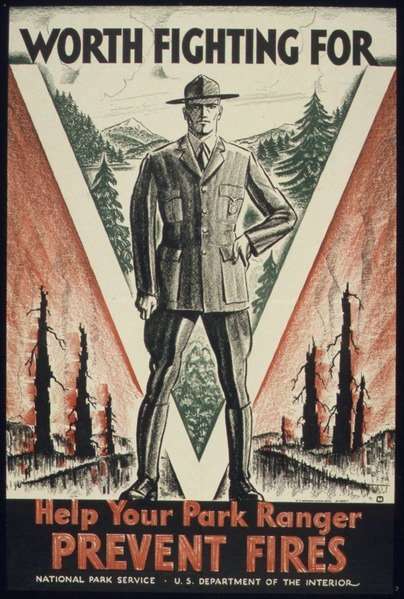It's Time To Let Somebody Competent Run National Parks (Hint: Private Enterprise)

The federal government has demonstrated the astounding ability to deal with its budget crunch by closing profitable operations like national parks, and thereby drown itself in red ink on its "money-saving" efforts. That's right, closing the national parks cost about $450,000 in lost entrance fees and rentals, every day. That's watching the bottom line, government-style. But even at the best of times, the federal government has proven itself a good steward of the national parks only when it lets somebody else do the work. Given the track record of government management of parks, and of parks managed by private contractors, maybe it's time to relieve the feds of a burden to which they've proven themselves inadequate.
This isn't a revolutionary idea. It's not even a new idea. A big part of the reason the federal government lost money by closing Park Service facilities is that thousands of them are leased to private managers that pay the feds for the privilege and turn a profit on the arrangement. Yes, it takes a special talent to turn that into a money-loser.
In a case study for the Property and Environment Research Center, Warren Meyer, president of Recreation Resource Management, which operates park facilities under contract, contrasts his experience with that of public managers.
People are often surprised at how expensive it can be to operate a public park. it's just a piece of open land, right? But public parks require a tremendous amount of labor for tasks such as cleaning bathrooms, picking up trash, and mowing the lawn. everything from buildings to trails to barbeque grills requires constant maintenance under the onslaught of heavy use in a popular area. Beyond the labor costs, utility bills must be paid, insurance must be purchased, and equipment such as trucks must be bought and maintained.
Public agencies can quickly become overwhelmed, particularly by labor costs, which can make up more than 80 percent of their expenses. …
As a result, even when public agencies charge entry fees (Arizona State Parks charge $10 per vehicle for most of its parks), these fees typically cover only about half of their operating costs. The rest must be
made up from state general funds—funds that are increasingly in short supply. As state governments take on bigger and more expensive tasks, such as providing health care, money for parks is often squeezed.
Meyer compares state-managed Red Rock State Park, in Arizona, to Crescent Moon Ranch, located on federal land and managed by his company (both parks are down the road from me). "Both units should have roughly the same operating costs," he notes. "In reality, the state-operated Red Rock Park costs more than twice as much to operate."
Admittedly, Meyer has a vested interest in portraying private park management in a good light, but his operation at Crescent Moon was one that the National Park Service had to force closed because there was no logical reason to shutter an operation that operated independent of D.C. budget shenanigans. (The closure caused such chaos that the Coconino County Sheriff's Office cut the cable at the gate and let people into the facility, from which the operating staff were still banned by the NPS.)
Testifying before the Senate Commitee on Energy and Natural Resources in July, PERC research fellow (and former NPS ranger) Shawn Regan urged lawmakers to expand such private management of national parks, to increase local autonomy for park managers so that they're not micromanaged from the central office, and to reauthorize the Federal Land Recreation Enhancement Act (FLREA), which lets parks keep the money they collect at the gates instead of sending it to D.C. to be reallocated by Congress and sent back.
Of course, private management and local control won't insulate parks and their patrons from politicians looking to inflict pain on the public just to demonstrate how much we need the federal government. That will require another fix entirely.
Show Comments (26)